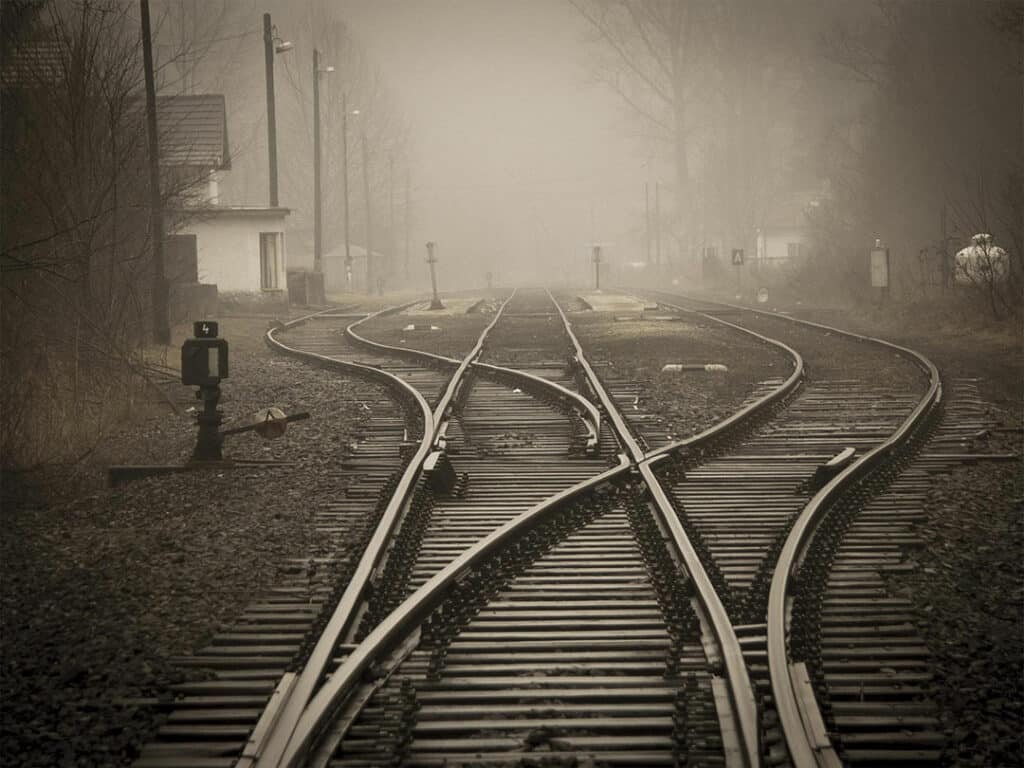What is GRP?
GRP stands for glass fibre reinforced polymer or glass reinforced plastic, it is a composite material made from resin and reinforced with glass fibres. It was originally designed for the boating industry as a material used to make lightweight and durable boat hulls.
Where is GRP used on the railway?
GRP composites have many uses in many industries, for construction as well as in domestic settings (e.g. fibreglass insulation) and can be found across the rail network from the handrails in stations, to flooring and in trackside cabinets.

The properties Of GRP
GRP has many properties that make it ideal for using to make railway cases.
Non-conductive and highly fire resistant
Firstly GRP does not conduct electricity, making it an ideal candidate for housing railway signalling and power supplies. In accordance with SIN119, many location cases have had to be improved to reduce the risk of electrocution to both the public and railway staff.
The non-conductive nature of the GRP panels means a reduced risk of harm to anyone from electrocution, should a fault occur in the wiring within the case.
Should a fire occur, the material itself is highly fire resistant, complying with BS476: part 7 class 1 regarding the surface spread of the flame and retention of integrity.
Lightweight
The glass fibre structure means that GRP cubicles are also much less heavy than their steel counterparts (up to 75% lighter!), which makes lifting them into position far simpler and safer. This can save valuable time and money on rail infrastructure projects.
Tough and durable
Like steel, GRP boasts impressive strength, withstanding efforts from thieves and anyone else trying to access rail signalling equipment. It has a long life expectancy and, unlike mild steel cases, GRP cubicles are corrosion resistant and thus requires very little maintenance.
Cost effective
GRP cubicles are also a cost effective alternative to steel, therefore helping save even more money for tightened budgets

How does steel compare with GRP?
Steel is an alloy of iron and carbon, with stainless steel containing additional ingredients such as chromium which provides resistance to corrosion compared to mild steel. Steel is durable, malleable (although shaping often requires the steel to be heated) and shows a high tensile strength.
fire resistant
Most metals conduct electricity well, making them less safe than GRP products.
Steel is generally also fire resistant. It does not promote the spread of flames and under most circumstances does not lose its integrity. As a thermal conductor steel will, however, get very hot to the touch in the case of a fire in a trackside case which requires important safety considerations.
Strong and durable
Steel is a remarkably strong material that is also malleable and its performance under tension and load cannot be beaten. However, although stainless steel requires very little maintenance, some maintenance may be required on painted mild steel to prevent corrosion.
Fluctuating costs
With fluctuating steel costs and supply issues, it is clear that GRP products have many advantages over using mild or stainless steel, particularly for rail infrastructure projects that need to meet strict budget and deadlines.
Is there still a need for steel cases on the railway?
Although GRP is a fantastic product which can out perform steel on some aspects there is still a need for steel cases on the railway:
- For cases that need to withstand high load
- Steel is recyclable and can be melted down and reused unlike GRP
GRP and steel LOCs, REBs, DNOs and PSPs at RSP
Here at RSP our experienced IRSE licenced in-house team design and manufacture a range of Network Rail approved products from both GRP and steel (either stainless steel, painted steel or powder coated) for a variety of signalling and power uses across the railway.
Our LOCs provide secure housing for rail signalling equipment, switchgear, communications networking and E&P equipment.
Our REBs are designed to house power to trackside railway signalling & interlocking equipment, electrification & plant power systems, switchgear and uninterruptible power supplies trackside.
Our DNO and PSP cubicles provide secure housing for trackside rail signalling equipment, switchgear, communications networking and E&P equipment.
You can view our full range of Network Rail approved products here. Or feel free to contact the team for any assistance with all your trackside case requirements.

